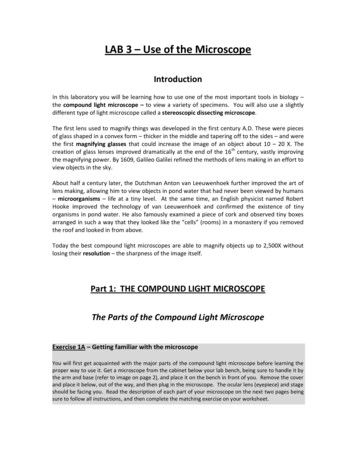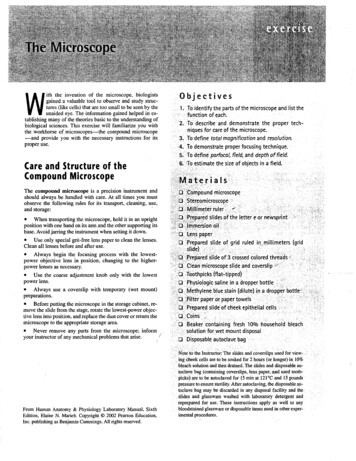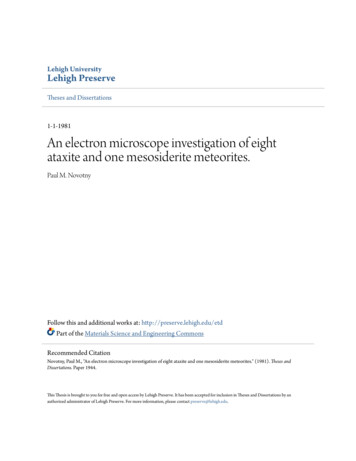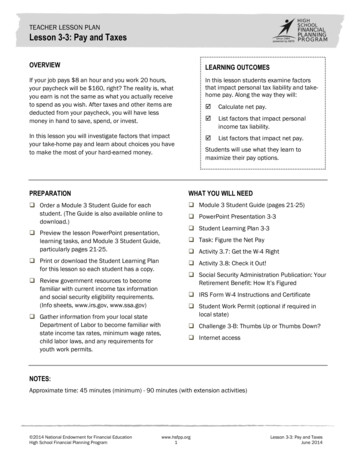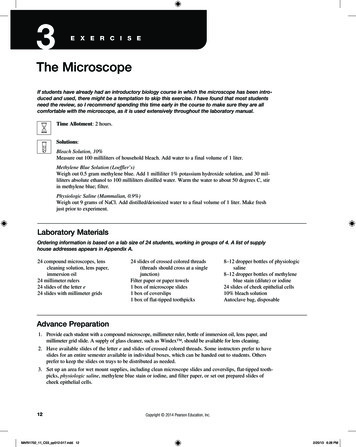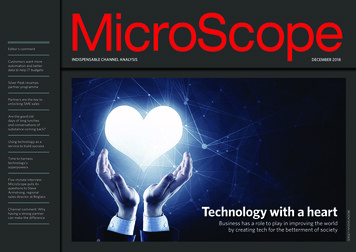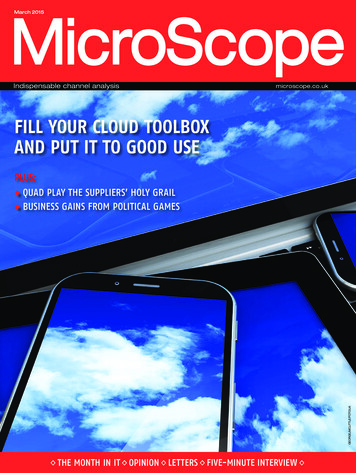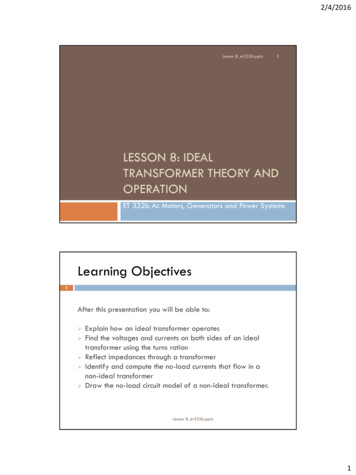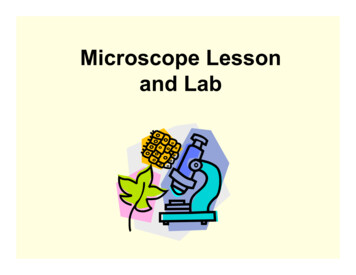
Transcription
Microscope Lessonand Lab
Lesson Objectives List the contributions of 5 scientists to thedevelopment of the microscope Explain the different types of microscopes Identify parts of a compound microscope Be able to correctly use a microscope Understand the difference betweenmagnification and resolution Be able to calculate magnification
Important Cell Scientists Van Leewenhoek(late 1700s, early1800s) Hooke (1665) Schleiden (1838) Schwann (1839) Virchow (1858) Lenses &Microscopes Cellular nature ofcork Plant cells Animal cells All cells frompreexisting cells
Cell Theory All living things are made up of cells Cells are the units of structure andfunction All cells arise from preexisting cells
"In the year of1657 Idiscoveredvery smalllivingcreatures inrain water."
Early Cell Scientists
Early MicroscopeCork CellsRobert Hooke
MicroscopesOne or more lenses that makes anenlarged image of an object.
Types of Microscopes SimpleCompoundStereoscopicElectron
Simple MicroscopesSimilar to a magnifying glass and has only one lens.
Compound MicroscopesLets light pass through an object and thenthrough two or more lenses.
Binocular (Stereoscopic)MicroscopesGives a three dimensional view of an object.(Examples: insects and leaves)
The Electron Microscope
Electron Micrographs
3.1 Parts of a Microscope
Microscope Parts
Lesson Objectives List the contributions of 5 scientists to thedevelopment of the microscope Explain the different types of microscopes Identify parts of a compound microscope Be able to correctly use a microscope Understand the difference betweenmagnification and resolution Be able to calculate magnification
Lab Objectives Review parts of the microscopeFind specimens under low and high powerMake a wet mountBe able to correctly use a microscopeView cheek cells under the microscopeView Volvox under the microscopeObserve Pond water under the microscopeand carefully draw what is observed
Lab Directions (30 minutes) Unsafe behavior immediate loss of lab privledge Assigned partners and stations Drawings and answers to questions on a separatesheet !!! Letter “e” Cheek cells Elodea leaf- No ! (Skip) Sketch Prepared Slide of Volvox Pond Samples- Read over directions on making awet mount; Put drawings on handout and includethe magnification used (ocular X objective totalmagnification)
Seat Work 30 minutes Complete Microscope Handout Work on Microscope Unit Review Review parts of microscope- VocabularyChallenge Cards (Cut out) Quiz on Tuesday of next week !
Laboratory Clean up You will be graded on the completeness of youranswers to the analysis questions and on the carefuland detailed drawings you make. I will be quizzing you on the parts of the microscope Your grade is also dependent on you returning allsupplies to the tray and cleaning up your lab space.I will give you a 5 minute reminder. All slides need to be cleaned and put back on thetray. You may throw away cover slips.
Basic Microscope Technique WorkingDistance: distance betweenthe specimen andthe objective lens Depth of Field: thickness of thespecimen that maybe seem in focus atone time
Basic Microscope Technique CalculatingTotalMagnification: Multiply themagnificationof the ocularlens by themagnificationof the objectivelens
Magnification vs. ResolvingPower Magnification: ResolvingPower: the ratio of anobject’s image toit’s real size measure of imageclarity. Theminimum distancetwo points can beseparated and stillbe distinguished astwo separate points
Letter “E”
Cheek CellsAnimalCells
Prepared Slide of .Volvox
Microscope Lab Observe the structure of an Elodea leafat increasing magnification
Pond Sample
Virtual MicroscopeSIMULATION
answers to the analysis questions and on the careful and detailed drawings you make. I will be quizzing you on the parts of the microscope Your grade is also dependent on you returning all supplies to the tray and cleaning up your lab space. I will give you a 5 minute reminder. All slides need to be cleaned and put back on the tray. You may throw away cover slips.
